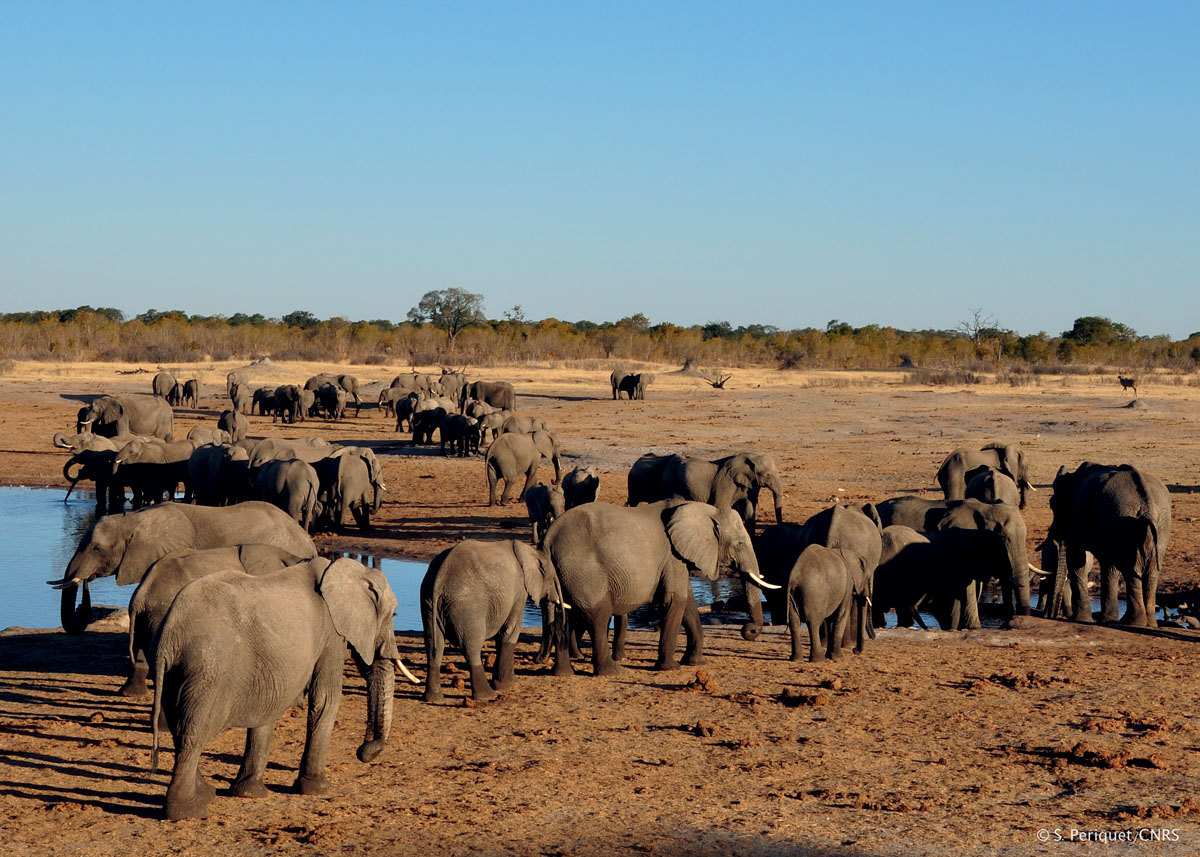[LUM#15] On the Elephant Trail
What if memory wasn't actually the most amazing thing about elephants? Some researchers think that the migration routes that herds take each year might be because of their awesome sense of smell, which lets them smell rain from really far away.

"It's a smell typical of the ecological systems we live in. The smell of wet earth after months of drought, suddenly hit by violent storms. At times like these, the smell is everywhere, very strong!" We are in southern Africa, on the border between Botswana and Zimbabwe. In Hwange National Park, Simon Chamaillé-Jammes, a researcher at the Center for Functional and Evolutionary Ecology*, has been observing for almost 20 years, not the rain, but the 40,000 elephants that inhabit this protected area the size of Belgium.
Memory card
40,000 elephants are also affected by the smell of this rain, which becomes vital when severe drought strikes, forcing matriarchs and their herds to set off year after year in search of this precious water. This great migration is still shrouded in mystery, rooted in the memory of the elephants. In an attempt to document this phenomenon, researchers, in collaboration with the Zimbabwe National Parks Authority, have been fitting elephants with GPS collars since 2009 in order to track them for two or three years (Science Direct – November 2017).
Thanks to this device, they were able to track the migratory routes of these giants for the first time, sometimes tracing straight lines over more than 250 kilometers. They also discovered that some groups of elephants did not migrate at all, but above all, they were able to confirm that "matriarchs reproduce the routes passed down to them by their mothers, while adjusting to current conditions when the usual water sources are dry, " thereby enriching a memory that can be called upon when a new drought occurs.
Random migration
This observation confirms the existence of the legendary elephant memory, but does not rule out the possibility of another explanation: that of an elephantine sense of smell, capable of detecting rain from tens of kilometers away or even further. "That characteristic smell of wet earth is a cocktail of several molecules, including geosmin, which can be reproduced synthetically, " explains the researcher. "So we conducted experiments on tame elephants to see if they could smell and identify this molecule." And the answer is yes.
To complete the experiment and demonstrate that elephants can use this scent as a guide when traveling, scientists plan to release this molecule into the environment of domesticated elephants to observe their reaction. "Some researchers believe that they can follow the smell of rain for more than 100 kilometers," explains Simon Chamaillé-Jammes. "What we already know for sure is that it is not just memory or perception that governs these migrations, but both. It remains to be seen how much weight they give to each."
Elephants Without Borders
Beyond the ecological and scientific interest of these observations, another issue is emerging: the conservation and management of these species, which do not hesitate to cross artificial state borders in order to migrate. "When an elephant migrates, it will be counted and managed by Zimbabwe, then a few months later it will be counted by Botswana, even though it is the same animal. This shows that conservation cannot be thought of on a national scale," explains the ecologist.
To better manage these large elephant populations, a huge transnational conservation area called KAZA, which includes Hwange National Park, has been created between Botswana, Zimbabwe, Angola, Namibia, and Zambia. The goal? To centralize all data relating to these species in a single institution in order to better guide conservation policies, particularly by preserving the ecological corridors connecting protected areas. This is a priority in order to no longer obstruct the elephants' ancient migration routes.
For a global atlas of migration
Animals migrate all over the planet. While the migrations of the Serengeti wildebeests have become famous due to the masses they move, others have become more discreet under anthropogenic pressure. "There is a real problem with conserving this phenomenon because we have infrastructure, roads, and fences being built on migration routes," emphasizes Simon Chamaillé-Jammes. Faced with this threat, around 100 researchers, conservation NGOs, and the United Nations Convention on Migratory Species (CMS) launched a project last May to create a comprehensive global atlas of ungulate migrations based on GPS data and local knowledge (Science – May 7, 2021).
Objective: to make this atlas a tool for decision-makers to encourage them to take migration routes into account when building large infrastructure projects. "It may be utopian, but these projects are sometimes financed by the World Bank, the IMF, and other large institutions that could potentially use this atlas to make adjustments," hopes Simon Chamaillé-Jammes.
Find UM podcasts now available on your favorite platform (Spotify, Deezer, Apple Podcasts, Amazon Music, etc.).